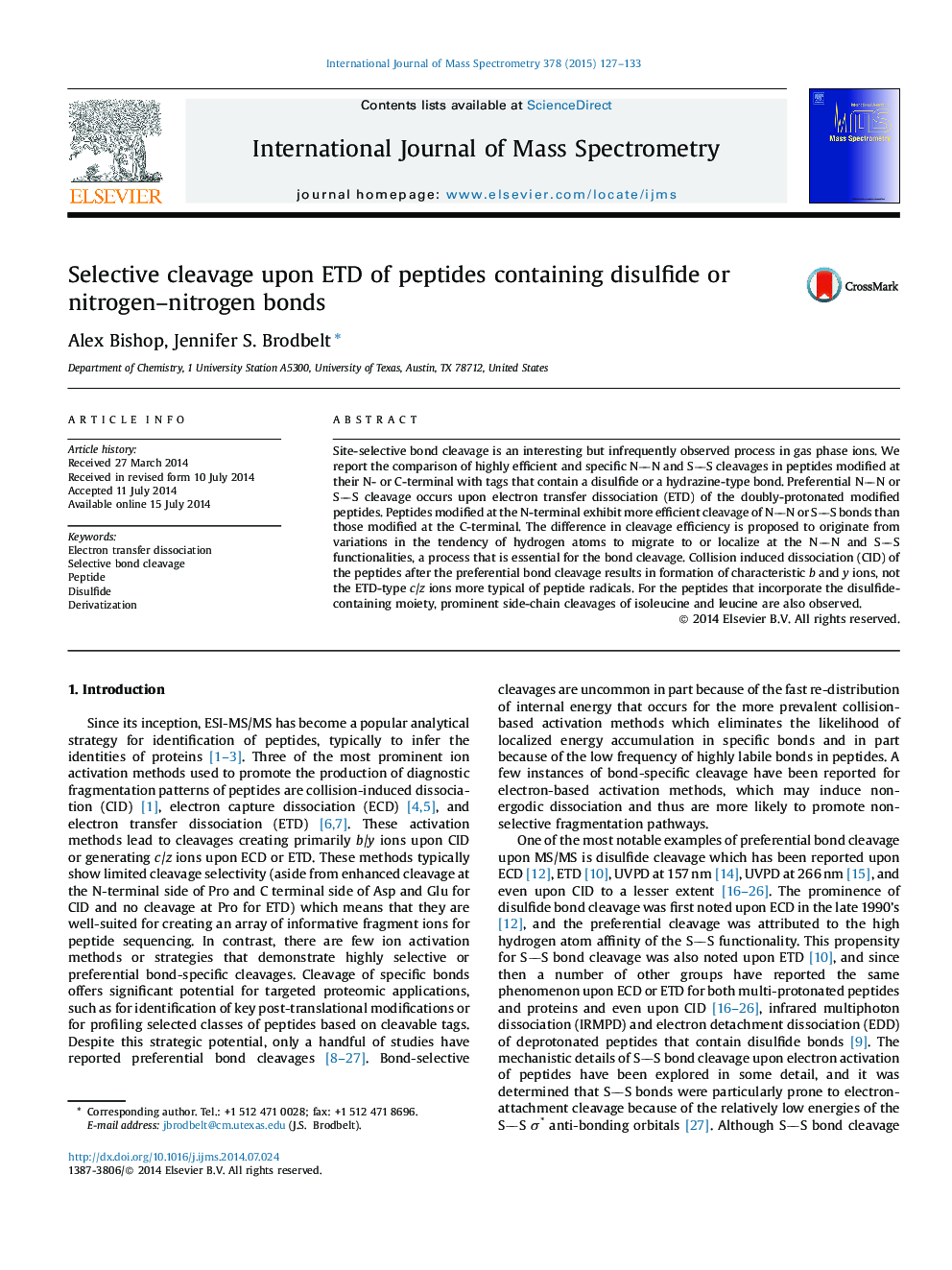| Article ID | Journal | Published Year | Pages | File Type |
|---|---|---|---|---|
| 1192088 | International Journal of Mass Spectrometry | 2015 | 7 Pages |
•Peptides are modified with disulfide- or hydrazine-containing tags.•Preferential NN and SS cleavage occurs upon electron transfer dissociation.•N-terminal modified peptides show more efficient cleavage.•Side-chain losses are prominent for disulfide-modified peptides.
Site-selective bond cleavage is an interesting but infrequently observed process in gas phase ions. We report the comparison of highly efficient and specific NN and SS cleavages in peptides modified at their N- or C-terminal with tags that contain a disulfide or a hydrazine-type bond. Preferential NN or SS cleavage occurs upon electron transfer dissociation (ETD) of the doubly-protonated modified peptides. Peptides modified at the N-terminal exhibit more efficient cleavage of NN or SS bonds than those modified at the C-terminal. The difference in cleavage efficiency is proposed to originate from variations in the tendency of hydrogen atoms to migrate to or localize at the NN and SS functionalities, a process that is essential for the bond cleavage. Collision induced dissociation (CID) of the peptides after the preferential bond cleavage results in formation of characteristic b and y ions, not the ETD-type c/z ions more typical of peptide radicals. For the peptides that incorporate the disulfide-containing moiety, prominent side-chain cleavages of isoleucine and leucine are also observed.
Graphical abstractFigure optionsDownload full-size imageDownload high-quality image (72 K)Download as PowerPoint slide
